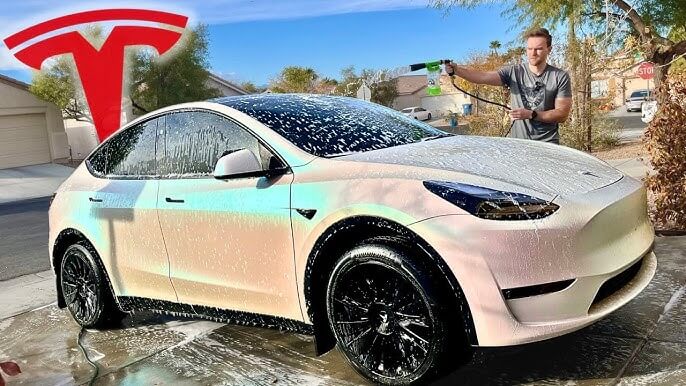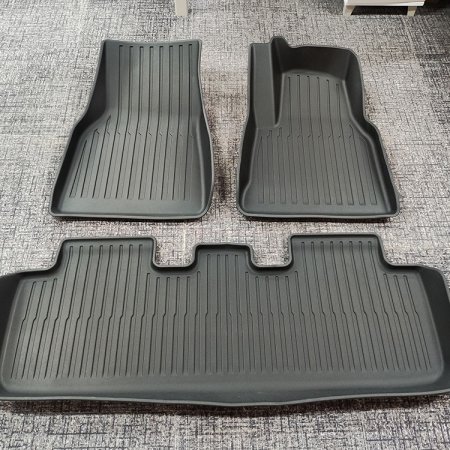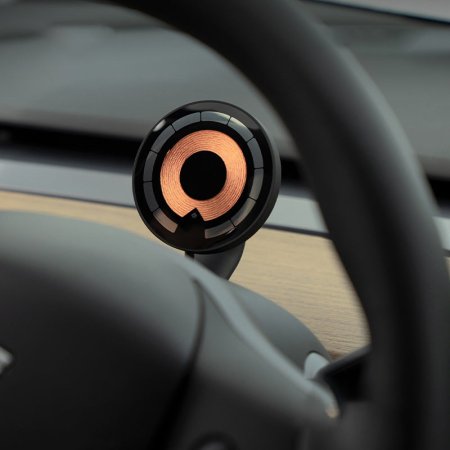When it comes to maintaining your vinyl wrap, proper cleaning is key to its longevity. A well-cared-for wrap can last anywhere from 5 to 7 years, particularly if it’s from reliable brands like 3M or Avery Dennison. However, if neglected, that lifespan can be drastically reduced to just 1 to 3 years. In this guide, we’ll explore the best cleaning techniques, how to prevent water spots and permanent etching, and how you can ensure your wrap lasts the full 7 years or beyond.
But before diving into the details, it’s essential to clarify a common misconception: vinyl wraps are not the same as Paint Protection Film (PPF). While both provide a form of protection, they serve different purposes. Vinyl wraps are primarily cosmetic—they change the color of your car—whereas PPF offers more robust protection against chips and scratches.
That said, vinyl wraps do offer some defense against the elements. They’re just much thinner than PPF, about a third of the thickness, which means they won’t protect you from rock chips or deeper scratches. Vinyl does have self-healing properties, but they’re limited to minor imperfections like light swirl marks or tiny scratches. These minor flaws typically heal over time with exposure to heat, especially from the sun. If you’re looking to speed up the process, pouring warm water over the affected area can help.
How To Maintain Your Tesla Vinyl Wrap
Cleaning your vinyl wrap the right way is essential for keeping it in top condition. The first and most important rule is to always use pH-neutral products, like our car wash shampoo, to avoid damaging the wrap’s surface. One of the most reliable methods for washing is the two-bucket technique. This involves using two separate buckets—one for the soapy solution and another for rinsing. Why two buckets? Simple: it helps prevent dirt and debris from making its way back onto your car. You should aim to wash your car every 2 to 3 weeks, depending on how often you drive and the conditions of the roads you travel on.
To take it a step further, consider using a grit guard in your rinse bucket. This will trap any dirt at the bottom, ensuring it doesn’t get transferred back onto your car. Once you’re ready to start, dip your wash mitt into the soapy water and gently glide it across the wrap. After each pass, rinse the mitt in the clean water bucket before dipping it back into the soap. A useful trick is to flip the mitt halfway through each panel for a more even clean. Also, be sure to rinse after cleaning every panel to prevent any dirt from building up again.
When washing, always work from top to bottom. Start with the roof and work your way down to the lower parts of the car. This strategy makes sure you’re washing the cleaner, less dirty areas first, saving the more soiled spots for last. It’s a simple method, but it ensures a thorough, scratch-free clean.
Recommended Washing Order for Your Vinyl Wrap:
Roof and Rear Windshield
Side Glass, Pillars, and Mirrors
Front Windshield
Hood and Fenders
Rear Quarter Panel and Trunk
Doors
Rear Bumper
Front Bumper
Rocker Panels
Important Disclaimer: It’s crucial to avoid washing your car within the first 7 days after installation, as well as keeping it out of the rain. Exposing the wrap to these elements too soon can lead to the edges lifting or failing prematurely.
If you’re using a foam cannon or a pressure washer, make sure to keep the nozzle at least 12 to 18 inches away from the surface. Don’t aim the spray directly at the edges of the wrap, as this could cause them to peel and damage the finish.
How to Prevent Water Spots
Getting rid of water spots starts with drying your vehicle properly. While most of us don’t have access to deionized water, if you do, it can make a huge difference. Deionized water is stripped of minerals, which are the primary culprits behind those stubborn water spots. So technically, with clean water, you might not even need to dry your car. But, even if you’re using standard water, it’s still wise to dry your vehicle to keep that glossy finish intact. Here are two reliable ways to do it:
Plush Microfiber Drying Towel
Grab a large, plush microfiber towel and gently run it across the surface of your car. Skip the rough scrubbing—just let the towel glide smoothly, as shown in the video. This helps you dry the vehicle without risking scratches or damage.Leaf Blower
For a quicker, hassle-free option, consider using a leaf blower, like the EGO. It’s fast, efficient, and, let’s be honest, oddly satisfying. This method works especially well if your car is ceramic-coated, as it will easily blow the water off, leaving your ride looking spotless.
Waterless Wash
Sometimes, you just can’t get to a full wash, and that’s when things like bugs, bird droppings, or tree sap can land on your wrap. It happens to the best of us! The trick is to deal with these contaminants as soon as you can, rather than waiting for your next scheduled cleaning. I always keep a bottle of waterless wash, or a quick detailer, tucked in my car along with a microfiber cloth. This way, I can quickly tackle any messes while I’m out and about, stopping them from leaving stains or causing lasting damage. If you let them sit too long, though, they can start etching into the vinyl, and once that happens, there’s no fixing it. Plus, waterless wash isn’t just for quick touch-ups—it’s perfect for cleaning door and trunk sills, making it an effortless way to keep your car looking sharp all around.
Ultimate Protection: PPF or Ceramic Coating
As I mentioned earlier, vinyl wraps aren’t designed to offer the same level of protection as Paint Protection Film (PPF). If you’re aiming for the ultimate defense, layering PPF over your vinyl wrap is your best bet. Originally crafted to protect vehicle paint, PPF works just as effectively on vinyl. It’s scratch-resistant, self-healing, and hydrophobic, which helps keep the wrap underneath in great condition with less effort on your part. I recommend applying PPF to the most vulnerable areas—think bumper, hood, mirrors, fenders, and headlights—where impact is most likely. Of course, if you prefer, you can cover the entire car for maximum protection.
Another powerful option is adding a ceramic coating over your PPF or vinyl. This enhances the hydrophobic properties of your wrap, making it far more resistant to water, dirt, and stains. Plus, it elevates the shine of your vinyl, bringing out its true luster. Just a quick tip: ceramic coating should always be the final layer in your protective arsenal. Nothing can stick to it, meaning it has to go on top of PPF or vinyl—never below.
Combining PPF and ceramic coating is a foolproof way to go above and beyond, ensuring that your vinyl wrap stays in top-notch condition and looks amazing for years.











